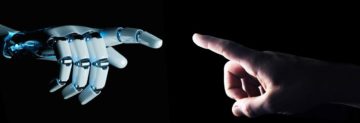Michael Levin in IAI News:
 One of the most useful metaphors for driving scientific and engineering progress has been that of the “machine.” But in light of our increased understanding of biology, evolution, intelligence, and engineering we must re-examine the life-as-machine metaphor with fair, up-to-date definitions. Such a process is allowing us to see that living things are in fact remarkable, agential, morally-important machines, writes Michael Levin.
One of the most useful metaphors for driving scientific and engineering progress has been that of the “machine.” But in light of our increased understanding of biology, evolution, intelligence, and engineering we must re-examine the life-as-machine metaphor with fair, up-to-date definitions. Such a process is allowing us to see that living things are in fact remarkable, agential, morally-important machines, writes Michael Levin.
The difference between living beings and machines was once apparent. Machines came from a factory and were designed by the real creatives – humans (or in the case of simple machines, such as levers, by crows), who understood exactly how they work. They were boring and predictable – they did the same thing over and over again, they did not adapt to new challenges, and they showed no evidence of having preferences or an inner perspective. Thus, we felt on safe moral ground to do whatever we wanted with them – disassemble them for example. Living beings were the exact opposite in every way. They were created, with great competency but no comprehension, by other living things. On a longer time scale, they appeared as a result of a blind search process (evolution), from an originally abiotic state, becoming infinitely clever in their handling of their environment and of novel challenges and opportunities.
More here.
